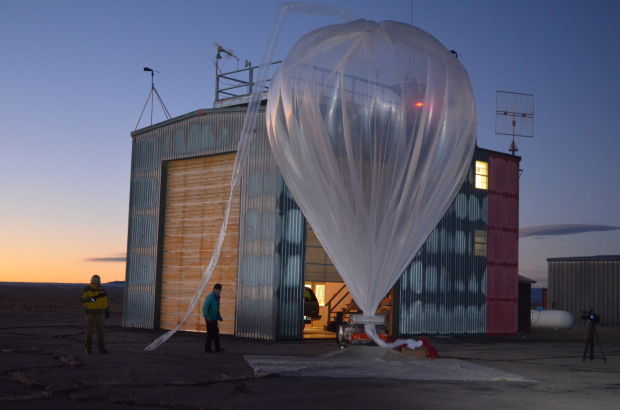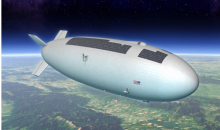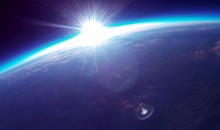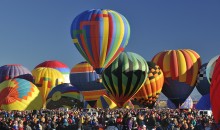University balloon research measures particles 20 miles up
The balloon looks more like an enormous jelly fish when it lifts off. Helium buoys the top as the rest of its fabric skin hangs limp.
It’s not a hot air balloon as we know it, where a pilot uses heat to control elevation. This balloon fills with gas until it becomes a 100-foot ball floating high above the Earth’s surface. Instead of carrying people, it hauls pricey instruments. And instead of floating around the state, the balloon bursts about 20 miles up in the sky, parachuting down instruments that measure particles, ozone, temperature, altitude and pressure. Those instruments record information every 10 seconds for the entire 2.5-hour descent and send it remotely back to a lab.
The balloons, and instruments, are part of a project by the University of Wyoming’s Department of Atmospheric Science program that turned 50 this year. It is the longest-running study in the country measuring the concentration and size of stratospheric aerosols — little particles in the atmosphere. Information gathered ultimately helps scientists track and predict changes in the climate and ozone.
Most of the Earth’s atmosphere can be loosely categorized in two parts: the troposphere and the stratosphere. The troposphere is closest to the Earth. It’s the air we breathe, the clouds we see and where we fly in planes. The stratosphere is higher. It begins about nine miles above the ground and extends to about 30 miles. When you’re in a jet plane at cruising altitude, it is the clear, dry air above you, said Terry Deshler, a University of Wyoming atmospheric sciences professor and the project’s lead investigator.
Jim Rosen, a graduate student with the University of Minnesota, started this stratospheric aerosol research in 1963. He knew dust particles floated in the stratosphere, but attempts to measure them were still in their infancy.
“It takes a little bit of an expert looking at the sky to discern the particles, but it’s pretty clear once you have the idea,” Deshler said. “People didn’t know much about them, particularly their size, what they were made of or where they came from.”
In 1970, Rosen came to the University of Wyoming, where he and fellow UW physicist David Hofmann began making regular measurements. Deshler started working with Hofmann in 1988 and took over when Hofmann left in 1991.
Particles in the stratosphere are important for two reasons. They reflect sunlight, so the more particles in the air, the cooler the planet. Large volcanic eruptions, for example, can cool the Earth’s surface for a period of months or even years. When the Indonesian volcano Tambora erupted in 1815, historians referred to 1816 as the “year without a summer,” Deshler said.
Particles also provide surface area for chemical reactions that change ozone concentration. The more particles, the higher the likelihood chemicals such as chlorine remain active and interact with ozone. Chlorine, a pollutant that exists mostly from decades of producing chlorofluorocarbons, destroys ozone. Less ozone means more UV rays striking the planet, causing increases in skin cancer rates.
The research alone doesn’t tell scientists about warming, but the data plays an important role in climate models that predict rising temperatures, Deshler said.
Scientists across the globe use the information to cross reference or refine their own data, said Xiaohong Liu, a UW professor of atmospheric sciences.
“We look at how the aerosols influence the climate in different ways,” Liu said. “We look at how they change the solar radiation, and change complicated processes like clouds and water vapors and ozone.”
Models predicting symptoms of climate change, such as melting sea ice and rising water levels, are incredibly complex. Liu’s focus is on making sure the models take particles into account, which is how he uses Deshler’s balloon information.
Deshler and his team set their balloon into the stratosphere about six times a year. Launching days depend on cloud cover, wind speed and direction, and teams on the ground track where the instruments fall. Money from the project comes mostly from grants from the National Science Foundation and NASA. Their current grant runs out in 2015, but Deshler plans to write a new proposal to continue the work.
“We have limited measurements of stratospheric aerosols in particular with the details that provide us good estimates of surface area,” Deshler said. “Aerosol surface area is important for both cooling and chemistry, and it’s the kind of information you can’t get from satellite easily.”
via – Wyoming Star Tribune.





